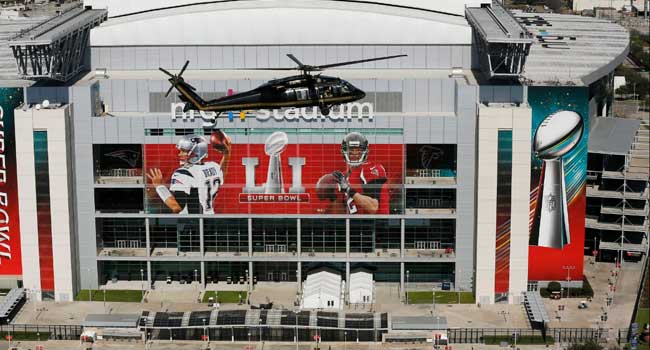
Security Tight for Super Bowl Sunday
Security officials are taking no chances as nearly one million people flow into the NRG Stadium in Houston, Texas to see the New England Patriots and the Atlanta Falcons clash on the field for a Super Bowl showdown this Sunday, February 6.
Local, state, federal and private security agencies are teaming up to create a security stronghold that will protect a three mile area around the stadium on the day of the big game. The Houston division of the FBI says they’ve been working on a security plan for this particular Super Bowl event for years.
“We’ve been working for several years with our partners to make sure appropriate security is in place,” said Perrye Turner, special agent in charge of the FBI’s Houston Division. “We’re going to do everything in our power to make sure it’s a safe event.”
While there is no real, credible threat to the Super Bowl, the game is being called a “top-tier security event.” Incidents around the world including Paris, Nice and Brussels have helped the agency to shape a security plan around the venue.
The FBI says the City of Houston and the Houston Police Department have brought in cement barricades to create a hardened perimeter around the stadium where crowds are likely to gather. The police and FBI believe the cement barriers will help to protect fans from vehicle attacks like the one in Berlin and Nice.
The trucks, cars and buses that will be allowed inside the perimeter and stadium will be screened with a mobile x-ray machine. They allow the security officials to see what is inside the vehicles without having to unload all of its contents to deem it safe.
In addition to the perimeter security, the security teams are partnering with Verizon to use smart cameras that will help to monitor abnormal behavior. If a bag is left somewhere suspicious or a car is parked for an abnormally long amount of time, the cameras will alert authorities to check out the scene. Any suspicious evidence will be passed along to the Houston Police Department.
According to officials, there will be more than 5,000 officers patrolling the area. Those officers will be aided by SWAT teams, cyber squads and intelligence analysts and surveillance specialists to ensure every part of the security landscape is taken care of.
“On the day of the big game, we will be here, but our presence may not necessarily be seen,” said Mark Webster, an FBI assistant special agent in charge in Houston who is coordinating the Bureau’s Super Bowl security efforts. “We will have multiple elements in place onsite as well as offsite.”
The FBI and local law enforcement agree that the community is the “eyes and ears” of the city. So if you’re planning on attending the Super Bowl, remember, “If you see something, say something.”